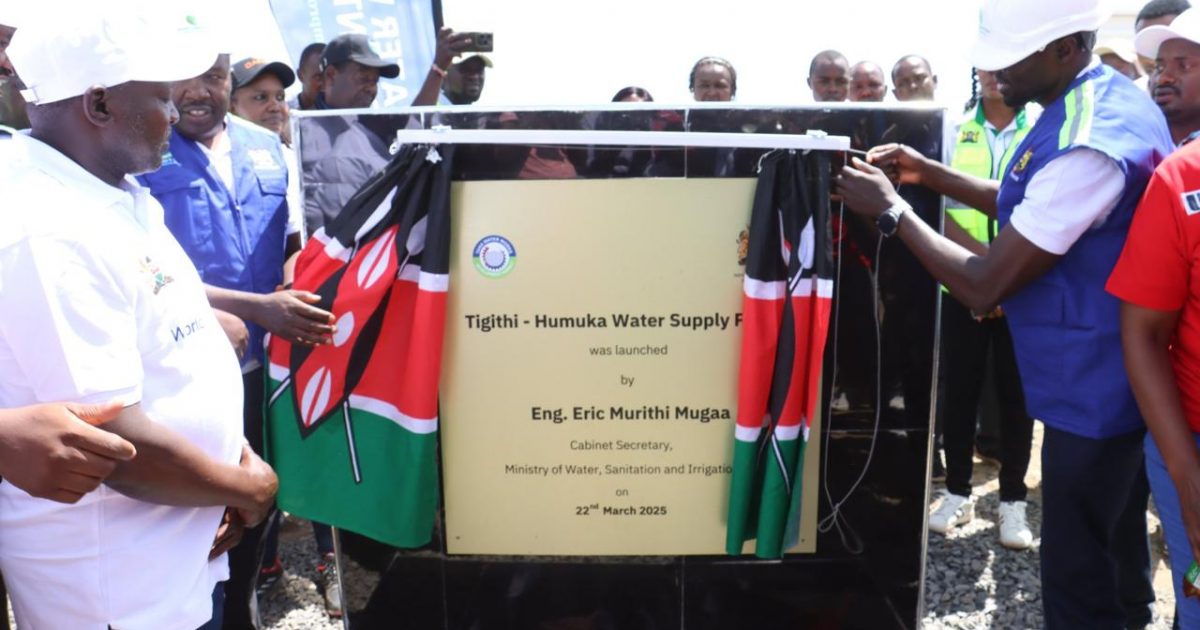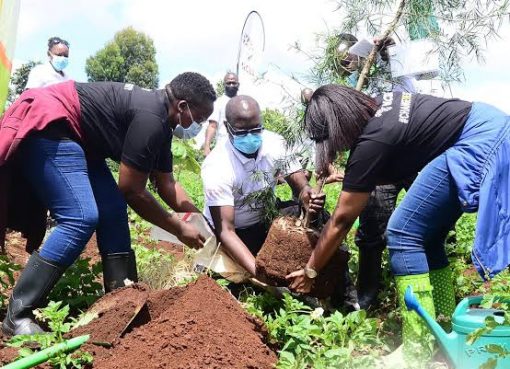The World Water Day was marked in Laikipia County with a call for concerted efforts to conserve the sources of this essential commodity whose scarcity is now a cause of conflicts within communities.
Water, Sanitation and Irrigation Cabinet Secretary Eric Mugaa led local leaders and other stakeholders in observing the event at Tigithi Secondary School grounds where he underscored the Government’s commitment in enhancing water security and climate resilience through sustainable management.
He noted that various interventions on water management have seen water supply coverage in the country rise significantly from 56.2 percent to 73 percent in the last six years but still remains below the recommended United Nations standards.
”The fresh water endowment availability for Kenyans is far below the global benchmark of 1,000 cubic meter per capita annually and is projected to decline as we move forward to year 2050,” cautioned the CS.
He said his ministry is intensifying efforts to implement the last mile connectivity that aims to reach approximately 200,000 households annually.
”The government seeks to increase water coverage by actively carrying last mile connectivity to more than 200,000 households per year,” assured the CS.
During his visit to Tigithi Ward, the CS witnessed the commissioning of Phase Two of the Tigithi-Humuka Water Project which is being executed by Tana Water Works Development Agency.
With this year’s theme being “Glacier Preservation,” Eng Mugaa said that three quarters of fresh water in the world is stored in glaciers, making them the second largest reservoirs on the planet.
”Glaciers are bedrock on earth as giant freshwater reservoirs, and they support our planet’s life systems and influence our day-to-day lives even for communities who live far away from them,” said the CS.
He said their decline due to climate change poses a direct threat to humanity impacting water availability, food security and overall, wellbeing since they regulate water flow in rivers that are used in hydro-electric power generation, irrigation and consumption by humans, livestock and wildlife.
The CS noted that glaciers on three mountains in East Africa-Mt Kenya, Mt Kilimanjaro and Mt Ruwenzori had shrunk significantly in the last few years and there was a projection that they would vanish completely in the next 15 years if no urgent climate action is taken.
”Sadly, glaciers are a crucial component of the Earth’s climate system. They store about 70 percent of the World’s freshwater, providing drinking water, irrigation and hydropower for billions of people, especially in regions dependent on seasonal meltwater. Glaciers also regulate sea levels and their melting contributes directly to rising ocean water levels, threatening coastal communities worldwide,” highlighted Eng. Muga.
The CS noted that glaciers regulate water sea levels and they directly contribute to rising ocean levels, hence threatening coastal communities worldwide.
”Glaciers are essential for maintaining biodiversity, sustaining unique ecosystems and serving as indicators for climate change. Their retreat is a visible alarming sign of global warming, highlighting the urgent need for action to mitigate climate change and protect critical natural resources,” urged the CS.
Mugaa said the 15 billion tree planting and growing initiative, where the country plans to increase its forest cover to 30 percent by 2032, is one of the initiatives that is geared towards protecting the glaciers through reduction of greenhouse emissions.
For the past one week, ahead of the World Water Day celebrations, the Water Resource Authority (WRA) has been sensitizing the public on glacier preservation to the water catchment through a tree planting campaign.
Laikipia Governor Joshua Irungu and Laikipia East MP Mwangi Kiunjuri, who accompanied the CS, reiterated their commitment in ensuring that they reduce the distance covered while in search of water to less than two kilometres by 2027.
Among the interventions that the leaders pledged to undertake is sinking of boreholes, supply of tanks for rain harvesting and rehabilitation of water supply infrastructure to support a rising population.
By Muturi Mwangi





